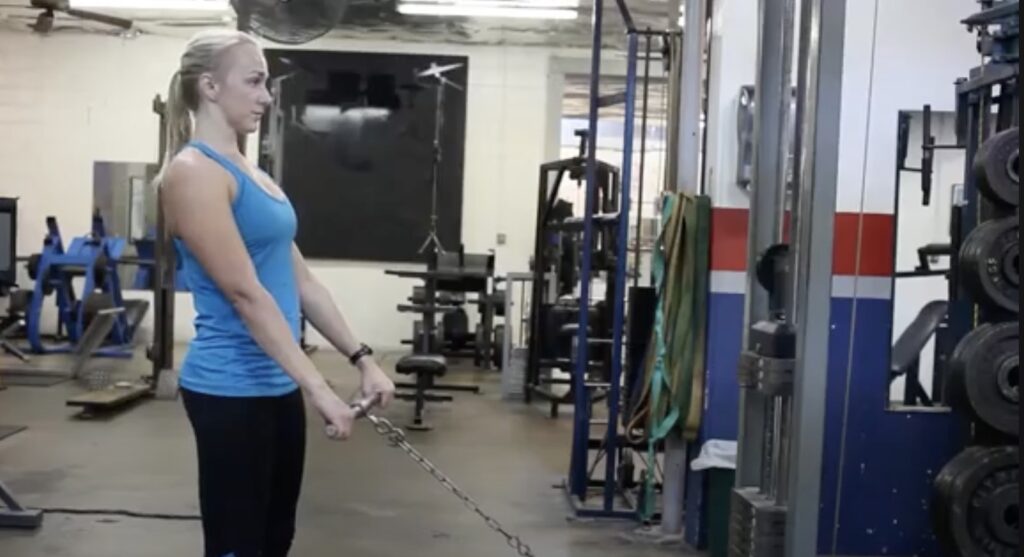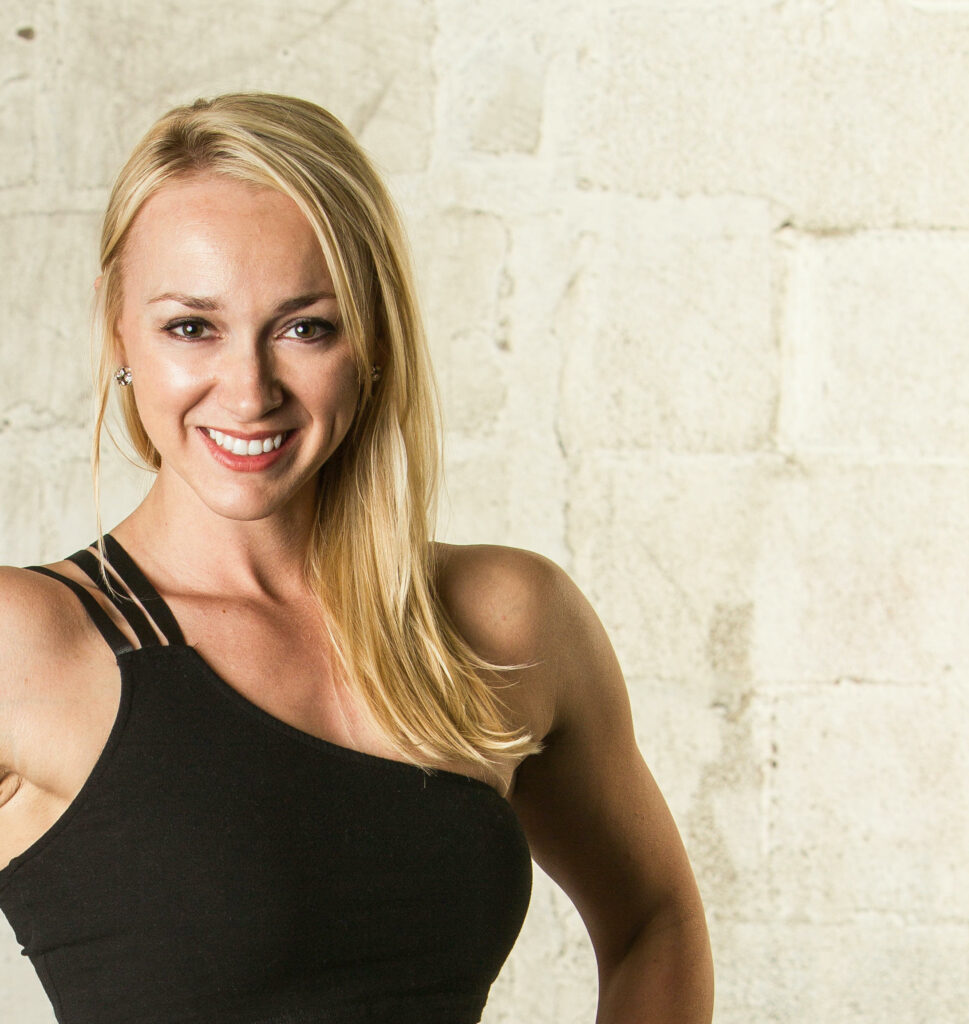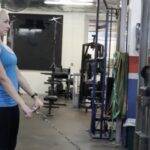What Are Cable Squats
Cable squats: muscles worked, how to do them, and why you would do them. Cable squats are a great accessory exercise for your lower body. They are different than barbell squats, and are a great way to get in some extra volume.
Cable squats are a variation of the traditional squat exercise, but they use a cable machine for resistance instead of a barbell. Instead of holding weights on your shoulders, like in a barbell squat, you hold a cable attachment (such as a rope or handle) in front of you and squat while pulling moving the cable stack.

Cable squats can help target the quads, glutes, and hamstrings, while also engaging your core to stabilize your body as you perform the movement. It’s a great option if you’re looking to add variety to your leg workouts or if you want to minimize stress on the spine compared to barbell squats.
Let’s discuss what muscles are worked during the cable squats.
Cable Squats: Muscles Worked
Cable squats primarily work the following muscle groups:
- Quadriceps (Front of the Thigh): The quads are heavily engaged during the squatting motion, as they extend the knees when you drive up from the squat position.
- Glutes (Buttocks): The glutes are heavily involved in the hip extension that occurs when you return to the standing position from the squat.
- Hamstrings (Back of the Thigh): The hamstrings assist in controlling the movement during the downward portion of the squat and help with the hip extension as you drive back up.
- Core Muscles: Your abdominals and obliques are engaged to stabilize your torso and maintain proper posture throughout the movement, especially since the cable attachment adds an element of resistance pulling you forward.
- Adductors (Inner Thighs): The adductors, or inner thigh muscles, help stabilize your legs as you squat, particularly if you perform the movement with a wider stance.
- Erector Spinae (Lower Back): While not the primary muscles, your lower back muscles work to help keep your spine in a neutral position, preventing you from rounding your back during the squat. The erector spinae muscles are particularly worked here, since the cable pulls you forward, unless gravity pulling you downward on traditional squats.
Overall, cable squats provide a full-body workout that primarily targets the lower body muscles, with an emphasis on the quads, glutes, and hamstrings, while also engaging your core for stability.
 . Kathryn Alexander at Hyde Park Gym circle 2016
. Kathryn Alexander at Hyde Park Gym circle 2016How Do You Do Cable Squats?
Here’s how you can perform cable squats for proper form:
- Set up the machine: Attach a rope or handle to the low pulley on a cable machine. Set the weight to an appropriate level. If you don’t know where to start, start with a few plates in.
- Position yourself: For your starting position, stand facing the machine, feet shoulder-width apart, with the cable attachment in both hands. Hold the rope or handle at chest height, keeping your arms extended in front of you.
- Squat: Lower your hips and bend your knees, keeping your chest up and back straight, just like in a regular squat. The cable should remain taut as you squat down.
- Stand up: Push through your heels to return to the standing position, resisting the pull of the cable as you go.
Common Mistakes on Cable Squats
Cable squats can be a killer move when done right, but there are definitely some common mistakes that can mess with your form or even lead to injury. Here are the most frequent ones:
1. Bending Your Elbows
- Why it’s bad: Bad may be overkill, but if you bend your elbows too much, you’ll probably lose your balance.
- Fix: Keep your arms long with elbows straight. Think of your arms like a tether, so your lower body can do the work.
2. Letting the Knees Cave In (Knee Valgus)
- Why it’s bad: Can lead to knee pain or injury.
- Fix: Focus on keeping your knees as wide as your big toe or wider. This will help you use your glute muscles optimally and keep your knees tracking the way you want them to.
3. Rounding the Lower Back
- Why it’s bad: Again, bad is situational here. The goal is to work your legs and glutes, with your upper body and core as supporting staff. If your back is rounded, you’ll have a lot of energy leakage there and you’re not exactly working what you’re aiming for.
- Fix: Engage your core and keep a neutral spine. Stick your middle back engaged and maintain that posture throughout.
4. Not Going Low Enough (Shallow Squats)
- Why it’s bad: You’re not working the full range of motion, so you’re leaving gains on the table.
- Fix: Aim to get your thighs at least parallel to the floor, or lower if flexibility and control allow.
5. Letting the Cable Control You
- Why it’s bad: You lose tension, control, and the benefits of the exercise.
- Fix: Actively control both the descent and the ascent. Don’t let the weight pull you. You can control this by using your core strength!
Cable Squat Variations
1. Cable Goblet Squats
- How: Hold the cable handle (or rope attachment) close to your chest like a goblet.
- Why: Encourages an upright torso, great for quad focus and core engagement.
- Tip: Works well with a rope attachment for better grip and wrist comfort.
2. Cable Front Squat
- How: Use dual cables, one in each hand, held at shoulder height like a barbell front squat.
- Why: More upper body involvement, good for balance and posture.
- Tip: Keep elbows up high to mimic barbell form.
3. Cable Zercher Squat
- How: Hold the cable in the crook of your elbows (like a Zercher squat with a barbell).
- Why: Torches your core, quads, and biceps all at once. Killer compound movement.
- Tip: Use a towel or pad if it’s uncomfortable on the arms.
4. Cable Squat to Row
- How: Squat down, then row the cable to your torso as you stand.
- Why: Adds upper body pulling, making it a full-body movement.
- Tip: Focus on rowing after completing the squat portion to avoid cheating the row.
5. Cable Split Squat / Bulgarian Split Squat
- How: Stand in a lunge or split stance with cable in one or both hands.
- Why: Emphasizes one leg at a time, great for fixing imbalances.
- Tip: Try using the cable for balance and constant tension rather than max resistance.
6. Cable Sissy Squat
- How: Lean back slightly as you squat down, letting knees travel forward.
- Why: Massive quad burner—like a sissy squat but the cable gives balance and resistance.
- Tip: Keep your hips forward and heels down for the full effect.
7. Cable Thruster
- How: Do a full squat, then push the cable handles overhead like a shoulder press.
- Why: Combo of legs + shoulders = spicy. Great for conditioning days.
- Tip: Use lighter weight to maintain speed and control.
You’ve got a ton of room to play with cable squats, whether you’re chasing glute gains, building quads, or adding a little spice to your leg days. Here’s a deeper dive into how you can use each variation depending on your goal—and some sneaky pro tips too.
Goal-Based Cable Squat Variations
Since we’re talking about cable squats muscles worked, let’s discuss how you can focus on different muscle groups by adjusting your setup and form.
For Glute & Hamstring Focus
You want moves that shift tension to the back side (posterior chain):
- Cable Pull-Through Squat (Hybrid)
- Think: RDL meets squat. Set the cable low behind you, grab with both hands through your legs, and squat.
- Glute Level: 10/10
- Tip: Squeeze hard at the top. Slow tempo down = more gains.
- Cable Bulgarian Split Squat (Rear Foot Elevated)
- Isolates the glutes and hams more, especially if you keep your chest slightly leaned forward.
- Tip: Let the front leg do all the work—don’t push off the back foot. Almost becomes single cable squats.
For Quad Dominance
You’ll want upright torso, knees forward, and deep range:
- Cable Goblet Squat
- Super quad-dominant when you go deep and keep tension at the bottom.
- Tip: Add a pause at the bottom to crush your quads.
- Cable Sissy Squat
- Looks crazy, feels even crazier—in a good way. Pure quad annihilation.
- Tip: Hold onto the cable for balance, lean back, and go slowww.
For Full-Body / Athletic Conditioning
These variations are great for circuits, supersets, or metabolic work for the entire body:
- Cable Squat Row
- Hits legs, core, and upper back. Keeps the heart rate up.
- Tip: Think power on the row—shoulder blades together at the top.
- Cable Thruster
- Total-body push movement—legs to shoulders in one smooth flow.
- Tip: Exhale as you press; helps keep your core tight and protect your back.
For Core Stability & Balance
These challenge your stabilizers and help with athletic control:
- Cable Offset Squat
- Hold the handle with one arm (off to the side), forcing your core to stabilize.
- Tip: Keep hips square; don’t let the cable pull you off-center.
- Cable Zercher Squat
- Front-loaded = core is lit up the entire time.
- Tip: Brace abs like a plank—super useful if you’re building towards barbell squats.
BONUS: Try This Cable Squat Finisher
“10-10-10” Cable Squat Burnout:
- 10 slow tempo reps (4s down, 1s up)
- 10 pulse reps at the bottom
- 10 fast explosive reps
Your legs will be questioning everything.
Don’t have a cable for cable machine exercises? You can do many similar exercises with free weights or resistance bands.
What Are The Best Leg Exercises
Historically, the best exercises for lower body strength are going to be traditional barbell squats, deadlifts, lunges, and some of their variations. If your goal is to gain muscle mass, especially mass in your legs, then include these on some or all of your leg days. But if you are looking for a change of pace and different exercises, add these cable machine squats to your fitness routine.
How To Include Cable Squats In Your Fitness Routine
Keep the basics the basics. Traditional strength training with regular squats is a good idea. But, add in cable squats as one of your accessory exercises. In a nutshell, you’ll want to do your warm up, compound exercises and main lifts like back squats. Then add in cable squats to get more volume on your leg day before you wrap up.
Work With Me!
If you are looking for a personal trainer in Austin, I’d love to talk with you! If you are not in Austin, Round Rock, or central Texas, let’s talk about online training.
Message me here for a free consult about personal training in Austin, Texas, or here for online personal training, and we’ll discuss your goals, background, equipment availability, schedule, and exercise preferences.
Let’s get you strong and healthy! 

About the author
Kathryn Alexander is a strength coach and personal trainer in Austin, Texas. She loves hiking, college football, and the feel of a perfectly knurled barbell. Read more about Kathryn here.







Leave a Reply